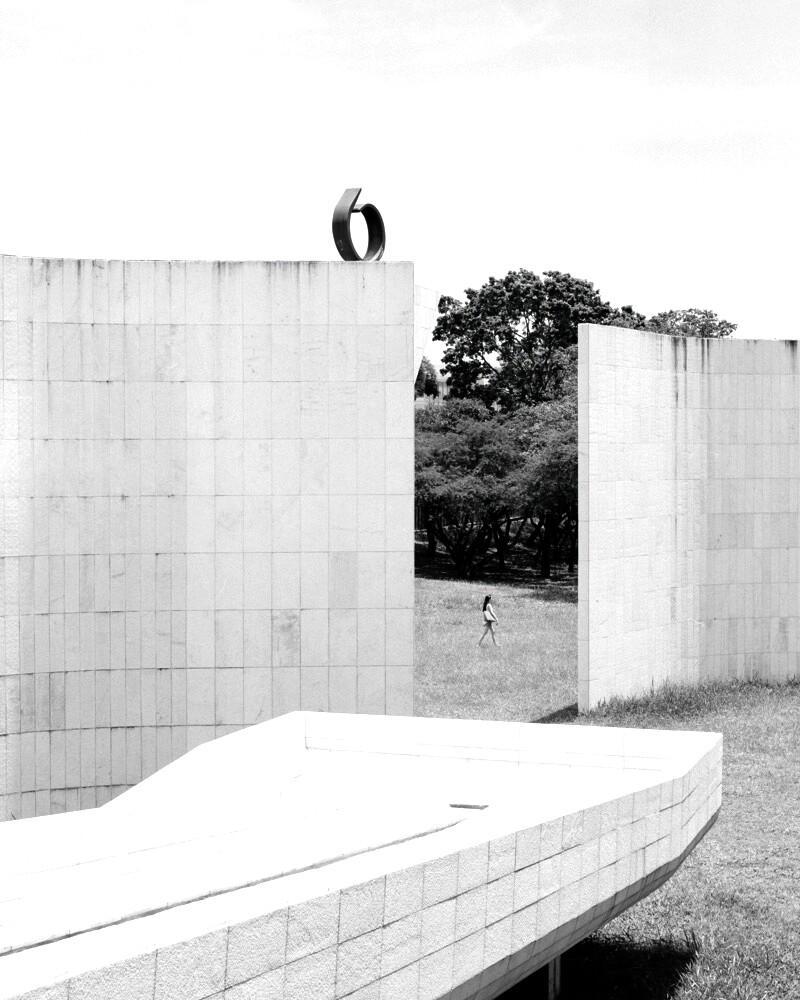“Brasília is a living museum for monuments and architecture,” says photographer Daniel Shea, who traveled from his home in New York City to central Brazil to shoot the iconic modernist city. “The buildings retain their function, but the city is really a historical site.”
From the air, Brasília looks like a bird or an airplane—a city poised to take flight into the future. It was designed and built to do just that. In the late 1950s, Brazilian president Juscelino Kubitschek envisioned a new federal capital in the country’s rural interior, one that would leave behind the colonial baggage of the old capital, Rio de Janeiro. He held a competition, and an international jury selected Brazil’s brightest talents to conceive not just individual buildings, but the workings of an entire city. His forward-looking utopian dream was inaugurated in 1960, and today Brasília is known as an unusually intact time capsule of what we used to think of as the future.

Some say architect Oscar Niemeyer designed the Cathedral of Brasília to resemble two hands raised to heaven; others see it as Christ’s crown of thorns.
Photo by Daniel Shea
Urban planner Lucio Costa began with a grand east-west boulevard, the Eixo Monumental. This leads to the capital’s Federal District, populated by Roberto Burle Marx’s abstract landscape design and architect Oscar Niemeyer’s famed buildings. Along the curving north-south axis, residential neighborhoods took shape in what Costa called superquadras, or superblocks, made up of apartment buildings, schools, playgrounds, and shopping areas.

The Brazilian Senate meets under the stately National Congress dome, one of Niemeyer’s most admired monuments. The two slender towers are filled with offices.
Photo by Daniel Shea
While some of the city’s structures—such as the National Congress, a plinth topped with a dome and an upturned half-sphere—were immediately praised as uplifting forms worthy of a new era, the city’s modern layout was critiqued as lacking human scale.

Niemeyer’s headquarters at Itamaraty Palace is nicknamed the Palace of the Arches. The stone and glass structure seems to rise out of a reflecting pool by landscape designer Roberto Burle Marx.
Photo by Daniel Shea
Over time, though, design enthusiasts and Brazilians alike have embraced the unique capital, which was named a protected UNESCO World Heritage site in 1990. “Almost every tourist I saw there was from Brazil,” says Shea. “It’s considered a pilgrimage to go to the nation’s capital.”

The rotating exhibits inside the National Museum of the Republic in Brasília are reached via a swooping entrance ramp that lends a Space Age look to Niemeyer’s domed museum.
Photo by Daniel Shea
Over a week spent photographing the architecture and the life of Brasília, Shea says he was struck by the fact that “this is a city built entirely from scratch. The designers got to imagine a new kind of city. When does that happen?”

The Tancredo Neves Pantheon monument was built in honor of Tancredo Neves, the first elected prime minister of Brazil after decades of military dictatorship.
Photo by Daniel Shea
>>Next: Test Your Knowledge of World Architecture











